Three years ago, I stumbled upon an episode of Chef’s Table: France on Netflix, featuring a Parisian restaurant I had never heard of and a chef who was a complete mystery to me. Fast forward two years, and I found myself, in the midst of my studies, given the chance to write about a restaurant that beautifully balances tradition and innovation. The memories of that episode flooded back. After rewatching it, I was even more captivated than the first time and saw this essay—usually a grueling task—as an opportunity to dive deep into the restaurant's unique history and evolution.
This establishment has held 3 Michelin stars since 1996, was ranked the 8th best restaurant in the world on the World's 50 Best Restaurants list in 2018, and saw its head chef, Alain Passard, win the coveted Chefs’ Choice Award in 2019. It has left an indelible mark on the culinary world, not least for its audacious decision to remove all meat from its menu in 2001—a bold move in a country where meat was once, and often still is, considered the heart and soul of dining.
So, when the opportunity arose to make a stop on my recent trip to Paris, there was no question in my mind: I had to experience this restaurant for myself. It felt like a unique chance to step into a place I already felt strangely connected to, despite never having set foot inside. And what a night it turned out to be.
Before continuing, you may like to read about Alain Passard’s rise to fame and the profound impact of Restaurant Arpège on the world stage here:
The building is discreet—so unassuming you’d walk by without noticing it, unless you knew exactly what you were looking for. There’s no grand entrance, no imposing double doors—just a small, solitary host desk, barely big enough for a single chair. The back wall is covered in tapestry depicting rolling countryside hills, serene lakes, wheelbarrows, and blooming flowers. Large plants dominate the room, and the chairs are made of woven straw. A fresh eggplant sits on the table, destined to stay with us throughout the meal. This is unlike any high-end French restaurant I’ve experienced before. As we settled in, a candle was lit, casting a soft, inviting glow over the cosy, dimly lit room.
Almost immediately, a refreshing cucumber drink was placed before us, perfectly chosen for the sweltering summer weather—a nice way to start before we even considered an aperitif. Next, a small plate appeared with the amuse-bouche: a simple yet delightful collection of lightly salted, raw vegetables straight from the garden. Delicious in their simplicity, they set the tone for what was to come. Then came the menus, with a surprising choice between à la carte and degustation options. Though I glanced briefly at the à la carte selection, we were here for the full experience—the signature L’été des Jardins vegetarian menu, priced at 490 € (AU$800).
The first entrée was a highlight: thinly sliced tomatoes, red onion, and freshly chopped chives, with a small drizzle of olive oil, and a touch of fleur de sel. The sheer freshness and vibrant flavours were unparalleled. I could have happily indulged in several more servings. This was followed by one of the chef's signature creations: an onion gratin, but not the kind you might expect. There was no cheese, no breadcrumbs—just perfectly cooked onions, poached in red wine and caramelised, roasted pumpkin, and a generous table-side sprinkle of pepper. The result was rich, buttery and exquisite — nothing short of amazing. Vegetarian food had never been so delectable.
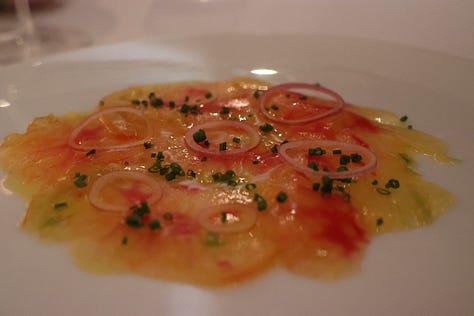
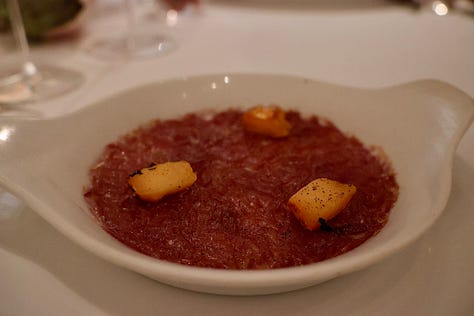
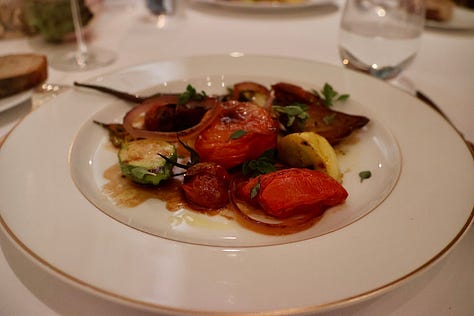
While the dishes were certainly designed to impress, by the end of the first hour, I found myself slightly perplexed. For a restaurant boasting three Michelin stars and a spot among the World’s Best, I had arrived with certain expectations of technical precision and refined service. Yet there were no synchronised plate drops, no cloches lifting in unison, no dramatic tableside service, and certainly no elaborate saucing. The dish descriptions were minimalist—just a straightforward listing of the vegetables used, without any insight into the techniques or creative choices behind them, as is often the norm at high-end establishments.
Having recently dined at Le Pressoir d’Argent in Bordeaux, where every dish was introduced with a minute-long exposition on ingredients, provenance, flavour profiles, and the chef’s philosophy, the understated approach here caught me off guard. The service felt relaxed to the point of informal. Plates were cleared at a leisurely pace, and when a guest left the table, rather than neatly folding the napkin back in place, the waiter would use a set of cutlery to drape it over the arm of the chair. It was initially disconcerting—almost unsettling in a setting of such high culinary repute.
But as the meal unfolded, my initial surprise shifted to a deeper appreciation. Fine dining, particularly in France, often carries a reputation for arrogance, unnecessary flair, and a hint of pretentiousness. While I generally feel comfortable in most high-end dining settings, I realised I had still brought with me certain expectations of formality and precision. I expected technical mastery in the service, comprehensive knowledge of each dish, and a refined demeanour that typifies many three-Michelin-starred establishments. Yet perhaps these assumptions miss the point of what truly earns a restaurant that third star.
As dessert arrived, Chef Alain Passard himself made an appearance in the dining room. This wasn't a fleeting hello, but a genuine effort to personally visit each table, allowing guests to engage with him directly if they wished. Some diners, unsure of who the man in the bright green shirt was, seemed hesitant to chat. Meanwhile, others, clearly familiar with the chef, departed from their conversations with a fresh basket of fruits to take home at the initiative of the chef.
When it was our turn, I couldn’t resist sharing my story with him. To both my delight and surprise, he responded with genuine interest and even pulled up a chair from a nearby table that had just been vacated. This gave me the chance to converse with a chef who had greatly inspired me years ago when I first developed an interest in fine dining. After expressing my gratitude for his generosity and the opportunity to dine in his restaurant, he smiled warmly and replied, “C’est le plus beau cadeau que vous pourriez me donner, venir manger dans ma maison” (The most beautiful gift you could give me is to come and eat in my house).
A few minutes later, he took a seat at a neighbouring table to finally commence his own dinner. With the time approaching midnight, the room was mostly empty, but it was another act that caught me off guard. In other high-end venues, you would never see service staff eating in the main dining room. It is frowned upon and seen as inconsiderate for guests. Here, however, it felt different. It felt as though we were joining the chef in his living room.
In that moment, I finally understood that the true charm of the restaurant wasn’t in its adherence to tradition but in its authenticity. Arpège is truly Passard’s home. Every aspect of the service was deliberate, embodying a chef who genuinely cherishes the act of sharing a meal with others. This experience taught me that critics have diverse expectations and that reaching the pinnacle of culinary excellence can come from embracing originality rather than conformity. Arpège will continue to inspire me, and I’m eager to discover what other surprises await in the world’s finest establishments.

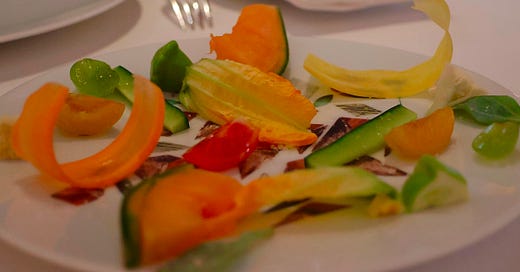




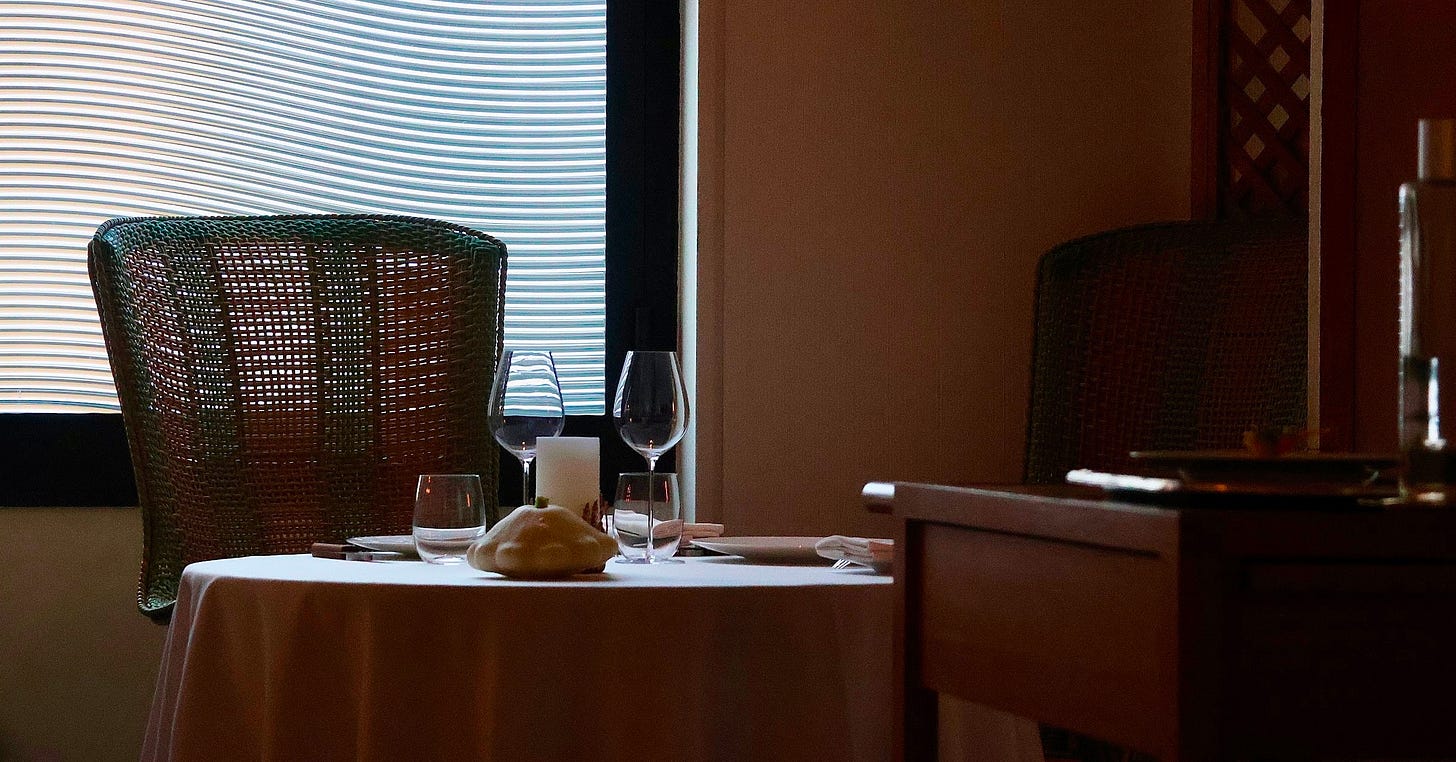

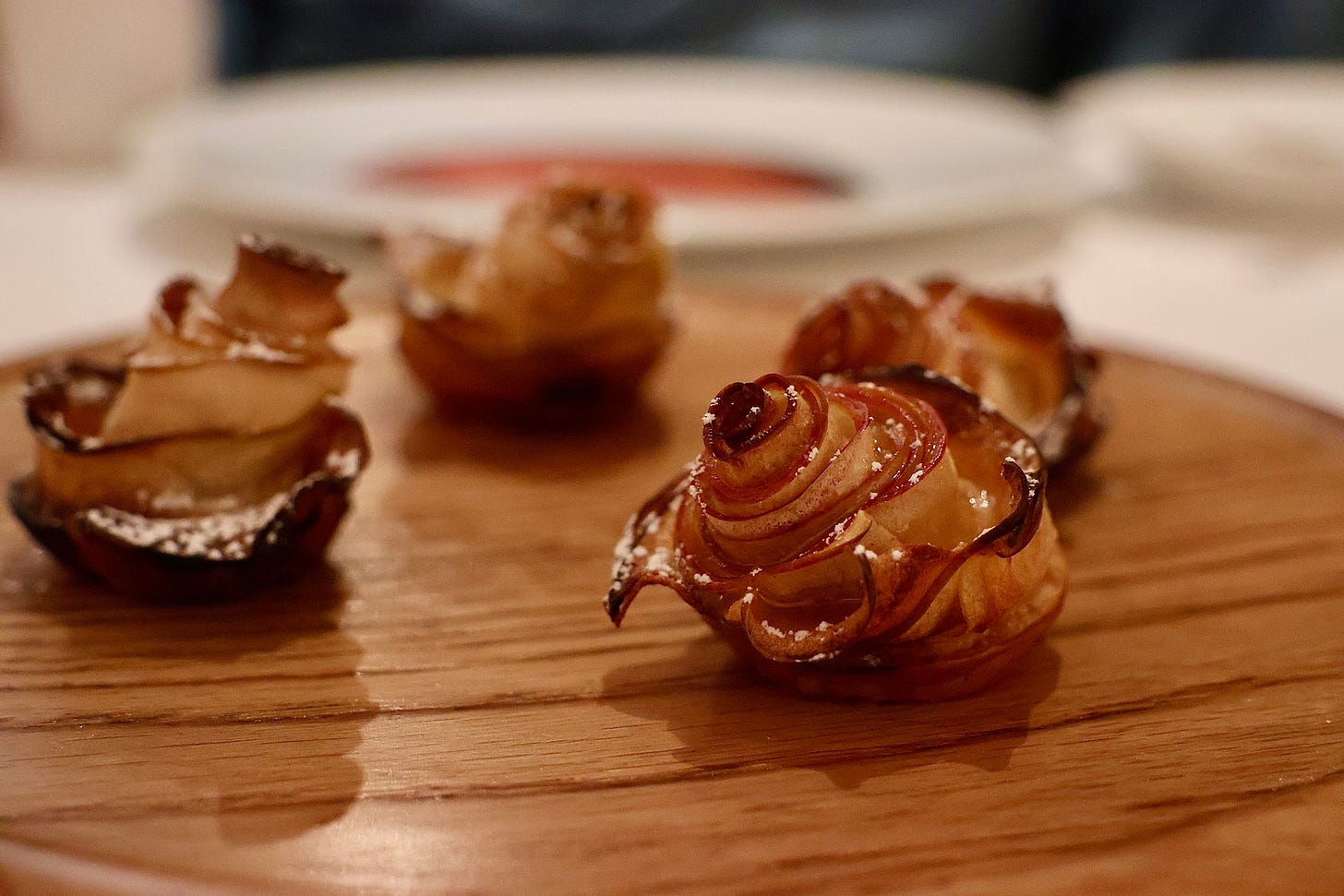
Great read Sean. Loved your insight into your experience at dining at Arpége. And your openness and willingness to embrace the non-conformity and non-traditional aspects of it. And what a treat to have a proper conversation with Passard. What a memorable night it must've been.
Great article Sean! Thank you! You have captured perfectly what I enjoy most when sharing a meal in whatever surroundings - healthy fresh local ingredients, prepared and served simply by someone for whom the joy of creating a delicious meal and a relaxed atmosphere for guests provides the inspiration for magic to happen!